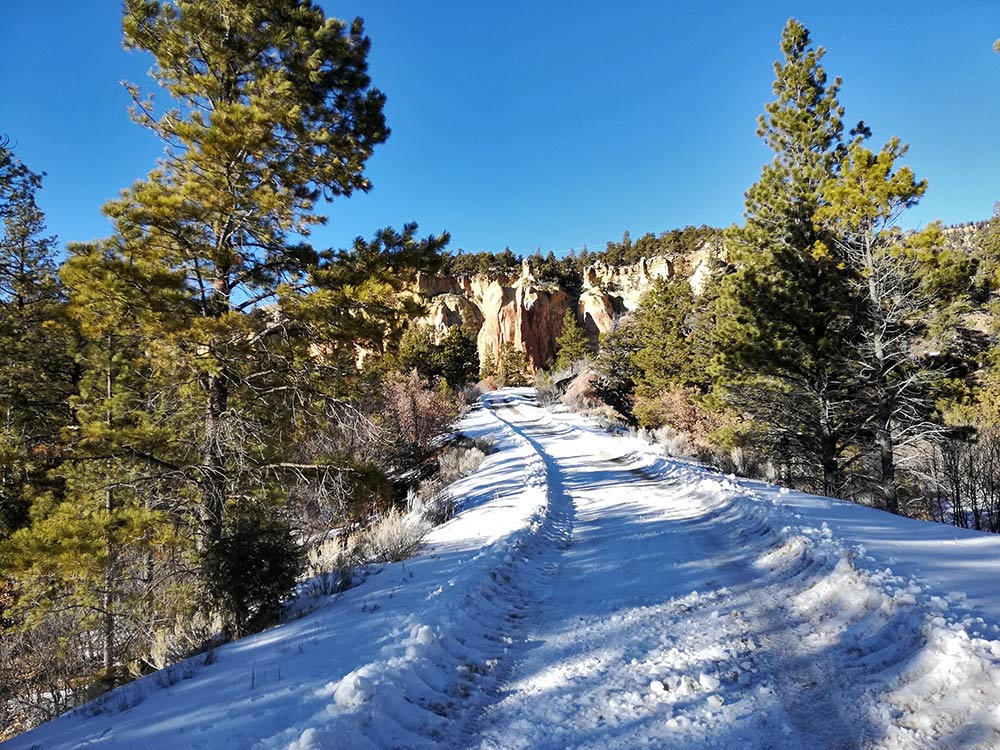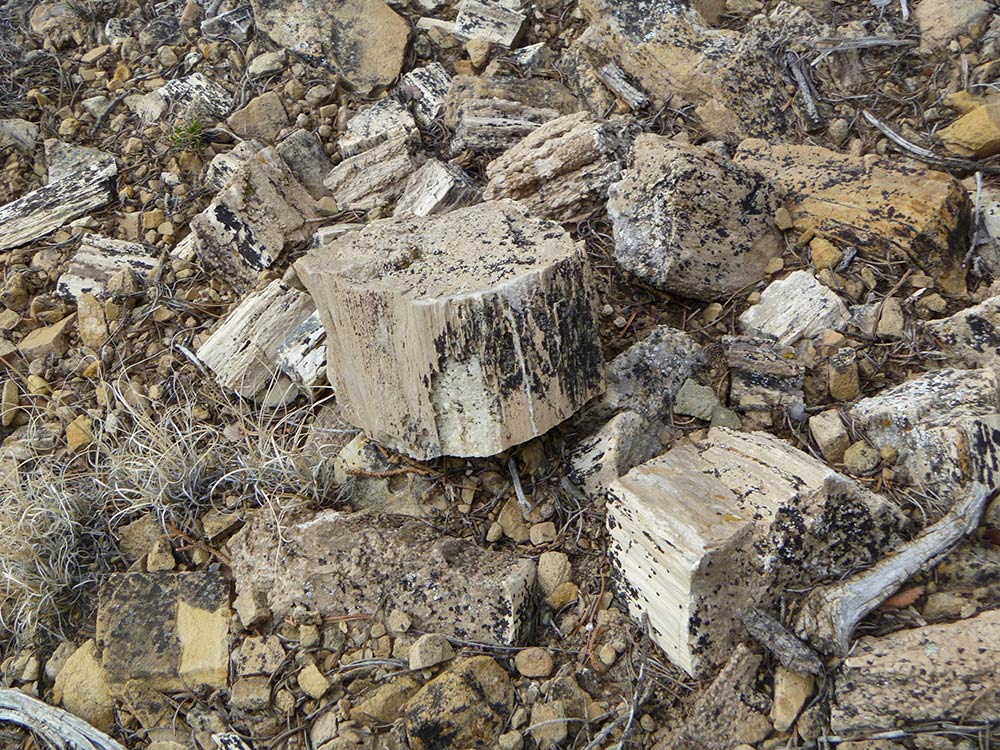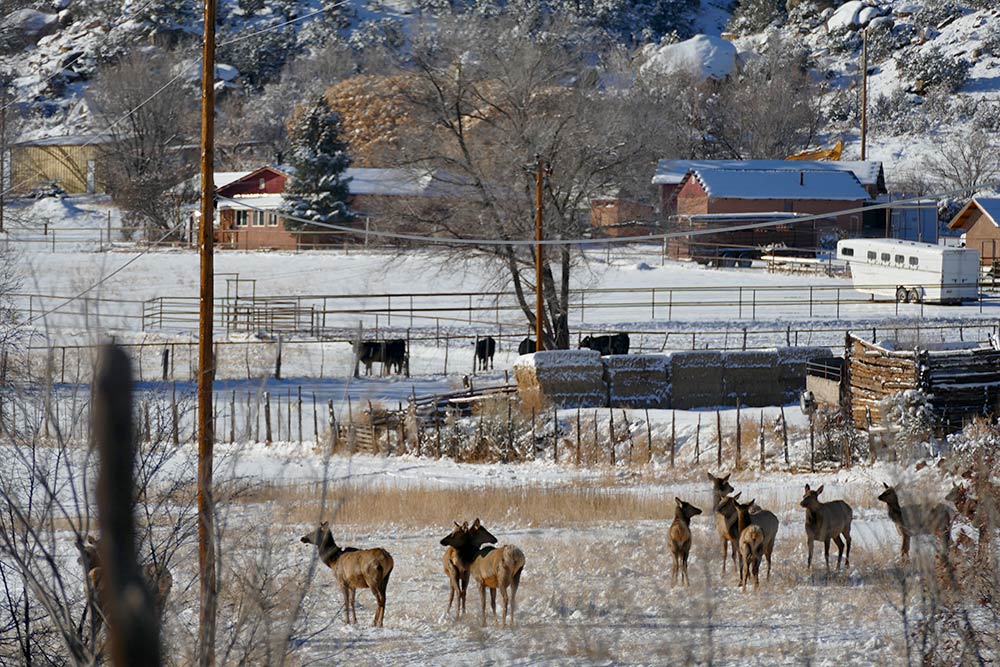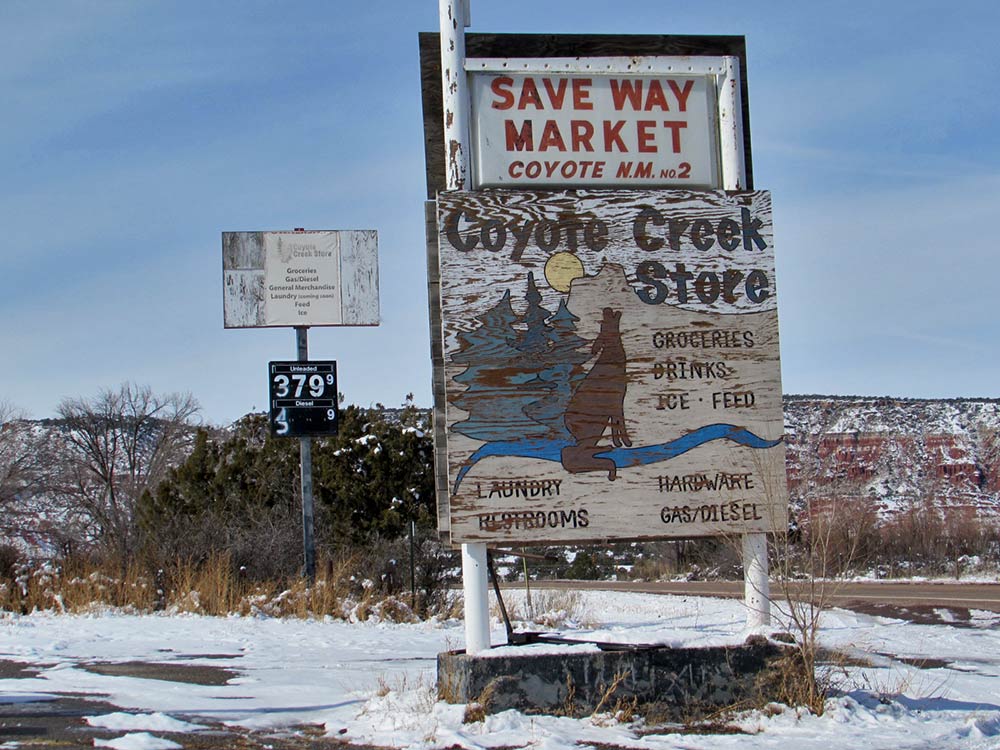|
~Jessica Rath Compared to Coyote, Abiquiu is a veritable hub of commerce and entertainment: several restaurants, several stores, a hotel, an elementary school, a gas station. Coyote has none of that. Not any more. It does have a post office, a clinic, and a volunteer fire station, plus the Coyote Ranger District – the northernmost district of the Santa Fe National Forest, covering 261,100 acres. If you love the outdoors, the diversity of the area around Coyote is pure delight: it boasts lush, alpine woodlands, pastoral mesas, and dark-red colored canyons and cliffs that are the signature signs of the region. And the ground is covered with treasures, too. The sides of almost every dirt road here is strewn with pieces of agate, which are of volcanic origin and are part of a supervolcano that last erupted 1.2 million and 1.6 million years ago and is now known as the Valles Caldera National Preserve. The last eruption and collapse piled up 150 cubic miles of rock and blasted ash as far away as Iowa. Near Gallina, and also on the way to the Pedernal near Youngsville, one can find quite large chunks of alabaster, a soft mineral which is a variety of gypsum and can be carved like soapstone. When I cross the meadow in front of my house and climb up to the mesa on the opposite side, I cross an area with lots of pieces of petrified wood. They’re nowhere as spectacular as those in the Bisti/De-Na-Zin Wilderness, but for being right at my front door they’re quite impressive. I wanted some input from a local voice, and Coyote resident Pete Garcia kindly agreed to chat with me. Pete will be 89 years old this coming March – maybe being active all his life kept him young, because I would have easily taken him to be ten years younger. He was born in Coyote, at his grandmother’s house – the abuelas commonly took care of the kids. Pete has two sisters and two brothers, five sons (one set of twins) and one daughter, and eight grandchildren. I asked Pete why the village was called “Coyote” – I figured, since the animals are so ubiquitous there might be a special reason for the name. Wrong; they’re everywhere here, that’s why the hamlet has its name. In Gallina, everybody had chickens. Youngsville was different, Pete told me: an Anglo named Jack Young opened a general store in the town which was then called El Rito, and he also established a post office. This was about 100 years ago. Pete’s grandparents were also born in Coyote, but he doesn’t remember them. He barely remembers his dad, he was eight years old when his father died. His mother lived until he got married. “ I moved to Utah when I got married, I was working in a mine there for two years. And then I was in the service for four years, in Germany – I was stationed in Hanau, near Frankfurt. This was the biggest city I visited while in Germany". Pete went to school in Coyote, except for one year, the 5th grade, when he went to school in Espanola. At that time, the school was across from the church, on what was then the main road. Eventually some people also lived in the school, and then it burned down. A new school, an adobe building, was built near the site of the current school. But this new school closed because there were not enough kids. The High School is in Gallina. When Pete graduated, there were only three students in his grade. There were more students in the class, but they were lower grades, all in the same room. Still, there were more people in Coyote at that time than there are now. People gradually moved away from Coyote when the Lab in Los Alamos opened, because they were able to find work at the Lab. They would move wherever they could find employment. In Coyote there just were not enough opportunities to make a living. Pete’s in-laws lived in Canones, they had a lot of cows. In the fall they sold the calves, but that didn’t bring very much money. The last store in Coyote closed a few years ago. People moved away, there just weren’t enough customers. Pete drove the school bus for a few years, and the children used to stop at the store to buy candy. They built a great new school in Coyote, but there were not enough kids, so the school closed. Then Pete worked at the Ranger Station for about 25 years and retired from there. His kids started in school in Coyote, and then continued in Gallina. The old school, the one near the church, was founded in 1944. The new one was open only for a few years. In the last year before the school closed there were only about seven kids who attended. Another indicator for the dwindling population is church attendance: Pete said that years ago there were many people in church every Sunday. Now – only a few. Arroyo del Agua also had a school house. There was no post office, but they had two stores, one of them was selling gas as well. And there used to be a garage where they fixed cars. After crossing the bridge, the first house on the right used to be a store, for a long time. And another small store was a bit further, when one turned left. Pete sold all his cows recently. He had cows all his life, he had his own cattle brand. He never had very many, only about 30. But it has become too much work. One of his kids still has 30 or 40 cows. They still have a ranch and 160 acres up in the forest. I asked Pete whether he feels sad that his village’s population keeps shrinking, but this doesn’t bother him all that much; it is what it is. Losing friends or relatives is always hard, whether they die or move away. But life goes on. And that’s my impression of Coyote too: there’s a sense of timelessness here, things change, but deep down it all remains the same. Like a steadily flowing river. Maybe that’s what inner peace is all about.
8 Comments
Lynne Zotalis
1/27/2023 07:59:38 am
It is so interesting to read Pete's account of life in Coyote, having lived near there in the early 70s. I would love to sit down with him and hear more. I'm sure we have similar connections and stories.
Reply
Jessica Rath
1/27/2023 09:46:35 am
Hello Lynne -- let me know how we could arrange something. I'd love to hear more frm YOU, as well -- Mesa Poleo in the 70s -- wow!
Reply
Tomas Garcia
1/27/2023 06:37:39 pm
This was a beautifully written article!
Reply
Justin Garcia
1/27/2023 06:50:51 pm
Very awesome to read. And happy to see my grandpa's stories being shared.
Reply
Benjamin Martinez
1/27/2023 07:50:43 pm
I agree with you. The story was awesome, but also historically accurate. Please cherish the memories of grandparents
Reply
Benjamin Martinez
1/27/2023 07:40:18 pm
Grew-up in Abiquiu remember lots of Coyote residents and friends. The only twins I remember were Nasario and Ysario, More likely Pete's Sons (Great people and friends). I also remember the Branch family of which we were NMHU Students. Oh how fun and great it was back then
Reply
Tim Garcia
1/28/2023 01:38:50 am
Those are his nephews. Tim and Tom are his boys (Womb mates)
Reply
Daría R
1/27/2023 07:53:10 pm
Was so great to learn about both Pete and the history of Coyote. Would love to read more about local history and locals like Mr. Garcia!
Reply
Your comment will be posted after it is approved.
Leave a Reply. |
Submit your ideas for local feature articles
Profiles Gardening Recipes Observations Birding Essays Hiking AuthorsYou! Archives
October 2025
Categories
All
|






 RSS Feed
RSS Feed